WWI, dogs
Up to 20,000 dogs were trained for front-line duties during World War One, newly uncovered records have shown.
The canines carried aid to the wounded, took messages between the lines and sniffed out enemy soldiers.
Their roles were deemed so important that in the early months of 1917 the War Office formed the War Dog School of Instruction in Hampshire to train them.
They were also used for pulling machine guns and equipment.
A collection of old newspapers, which has been made available on the family history website findmypast.co.uk, reveals how the animals lived in the trenches.
Many, about 7,000, had been family pets, while others were recruited from dogs' homes or came from police forces.
Sentinel dogs were trained to stand quietly on the top of the trench alongside their master's gun barrel, in order to let the soldiers know if anyone attempted to approach the barbed wire.
'Heart-wrenching'
One report, from the Dundee Evening Telegraph in 1916, describes the skills: "A watchdog never barks; at the most he will use a low growl to indicate the presence or approach of a hostile force.
"More often than not the mere pricking of the ears or the attitude of expectancy is sufficient to put his master on his guard."
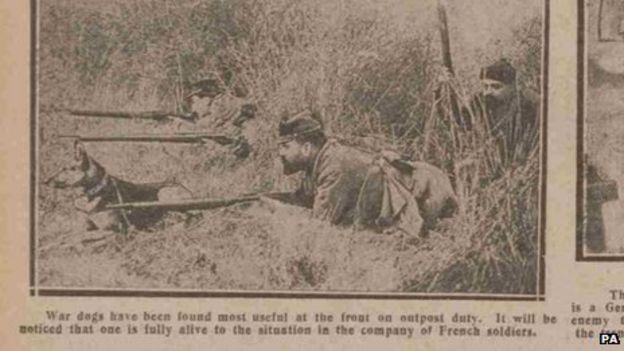 PA
PA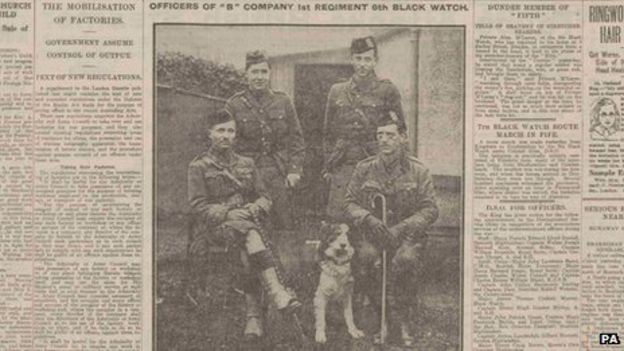 PA
PA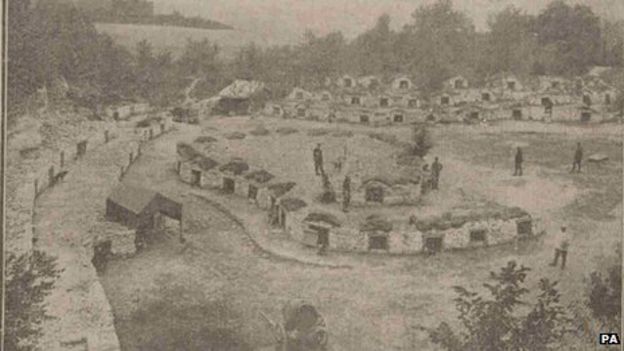 PA
PA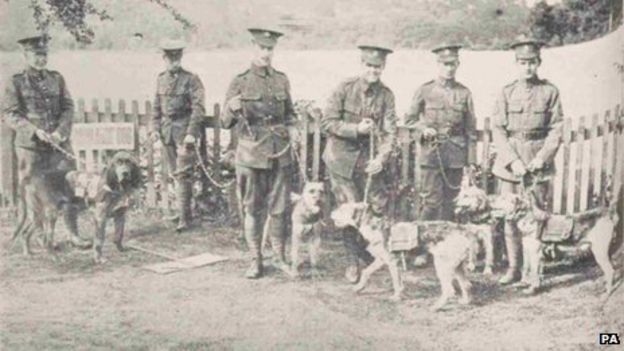 PA
PA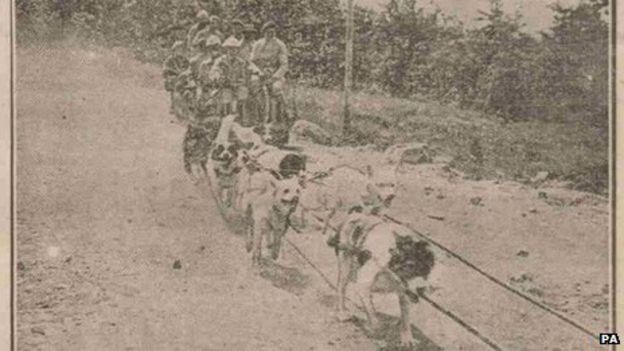 PA
PA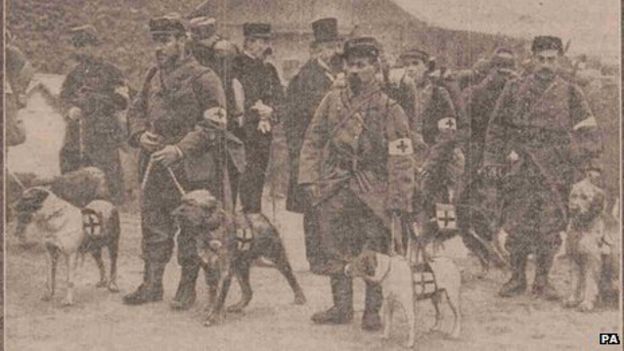 PA
PA
Roles and functions of military dogs
Military dogs in World War One were positioned in a variety of roles, depending on their size, intelligence and training. Generally, the roles fell into the category of sentry dogs, scout dogs, casualty dogs, explosive dogs, ratters and mascot dogs.
Sentry dogs
These dogs were patrolled using a short leash and a firm hand. They were trained to accompany usually one specific guard and were taught to give a warning signal such as a growl, bark or snarl to indicate when an unknown or suspect presence was in the secure area such as a camp or military base. Dobermans have traditionally been used as sentry dogs and are still widely used today as guard dogs.
Scout dogs
These dogs were highly trained and had to be of a quiet, disciplined nature. Their role was to work with soldiers on foot patrolling the terrain ahead of them. These dogs were useful to the military because they could detect enemy scent up to 1000 yards away, sooner than any man could. Instead of barking and thus drawing attention to the squad, the dogs would stiffen raise its hackles and point its tail, which indicated that the enemy was encroaching upon the terrain. Scout dogs were widely used because they were highly efficient in avoiding detection of the squad. Casualty dogs
Casualty or ‘Mercy’ dogs were vital in World War One. Originally trained in the late 1800’s by the Germans, they were later utilised across Europe. Known as ‘Sanitatshunde’ in Germany, these dogs were trained to find the wounded and dying on battlefields and were equipped with medical supplies to aid those suffering. Those soldiers who could help themselves to supplies would tend to their own wounds, whilst other more gravely wounded soldiers would seek the company of a Mercy dog to wait with them whilst they died.
Messenger dogs
Dogs were used as messengers and proved to be as reliable as soldiers in the dangerous job of running messages. The complexities of trench warfare meant that communication was always a problem. Field communication systems were crude and there was always the very real possibility that vital messages from the front would never get back to headquarters or vice versa. Human runners were potentially large targets and weighed down by uniforms there was a chance that they would not get through. In the heat of a battle, there was even less of a chance of a runner getting through as the enemy’s artillery was likely to be pounding your frontline and the area behind it. Vehicles were also problematic as they could breakdown or the ‘roads’ could have been reduced to a mushy pulp and travel on them made impossible.
Dogs were the obvious solution to this pressing problem. A trained dog was faster than a human runner, presented less of a target to a sniper and could travel over any terrain. Above all, dogs proved to be extremely reliable if they were well trained. A dog training school was established in Scotland and a recruit from this school traveled over 4000 metres on the Western Front with an important message to a brigade’s headquarters. The dog traveled this distance (war records classed it as “very difficult” terrain) in less than sixty minutes. All other methods of communicating with the headquarters had failed – but the dog had got through.
Mascot dogs
Dogs also had another role to play on the Western Front. For men trapped in the horrors of trench warfare, a dog in the trenches (whether a messenger dog or not) was a psychological comfort that took away, if only for a short time, the horrors they lived through. It is said that Adolf Hitler kept a dog with him in the German trenches. For many soldiers on any of the sides that fought in the trenches, a dog must have reminded them of home comforts.

Comments
Post a Comment